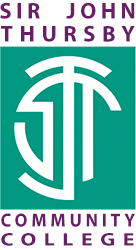Topic 2 Year 7 Mathematics
| Mathematics | |||
| Topic | Axioms and arrays | ||
| No of lessons | 8 | ||
| When is it happening | Term 1 Year7 Week 2-3 | ||
| What will students learn | In this unit, students develop their understanding of different models for multiplication and division. Students also explore the axioms of number and which operations they apply to. The unit begins by looking at structures which lead to multiplication and the different models that can be associated with these structures. The array model is developed to explore the commutativity of multiplication. The array model is again used to introduce the associativity and distributivity axioms | ||
| Key Knowledge that students should know at the end of 'Topic' | This is the knowledge that students will meet for the first time in this topic |
Explore contexts leading to multiplication and division calculations Develop and interpret models for multiplication and division Define commutativity of multiplication Use arrays to derive fact families Use commutativity of multiplication to solve division problems Develop models for the commutativity of multiplication Define associativity of multiplication Develop models for the associativity of multiplication Develop understanding of the distributive property of multiplication over addition Use the distributive property to calculate efficiently Use the commutative, associative and distributive properties to describe relationships between different multiplication tables Explore common multiples Explore conjectures using tracking calculations Use algebraic notation to represent distributivity Use understanding of the axioms to calculate using a range of strategies deciding on most efficient |
|
| This is knowledge that students may have met before but will need to deepen their understanding |
Familiarity with relationship between multiplication and division Experience with worded problems Familiarity with arrays to represent multiplication Understand addition is commutative Understanding of the relationship between multiplication and division Familiarity with arrays to represent multiplication Familiarity with partitioning strategies for multiplication Fluency with times table facts Familiarity with axioms Familiarity with properties of multiplication and models to represent them Familiarity with properties of multiplication and models to represent them Familiarity with relationship between multiplication and division Experience with worded problems Familiarity with arrays to represent multiplication Understand addition is commutative Understanding of the relationship between multiplication and division Familiarity with arrays to represent multiplication Familiarity with partitioning strategies for multiplication Fluency with times table facts Familiarity with axioms Familiarity with properties of multiplication and models to represent them Familiarity with properties of multiplication and models to represent them |
||
| Key Skills that students should be able to demonstrate at the end of 'Topic' | This is the skills that students will meet for the first time in this topic |
Be able to represent multiplication through a variety of models Experience manipulating models and calculations based on the associativity and commutativity of multiplication |
|
| This is skills that students may have met before but will need to develop | Understand the commutative and associative properties of multiplication | ||
| Key vocabulary that students should know and understand |
Commutative, associative |
||
| The Big Question | Can I find all factors of a given number? | ||
|
Key questions that students should be able to answer at the end of the 'Topic' |
Can I interpret worded questions correctly for simple addition and subtraction sums. | ||
| Do I understand fact families? Can I use one fact in my fact family to work out the others? | |||
| Do I know that addition and multiplication are commutative? | |||
|
Can I use the associative property to calculate 36×25 and 2.2×50? |
|||
|
Can I write a calculation using the distributive property to calculate 347×6? |
|||
|
Do I understand my multiplication facts? If I double the 4 times table I will have the ____ times table If I ________ the 6 times table I will have the 12 times table If I triple the ___ times table I will have the 12 times table |
|||
|
Can I complete the diagrams and calculations for the distributive |
|||
|
Using modelling to multiply numbers. |
|||
